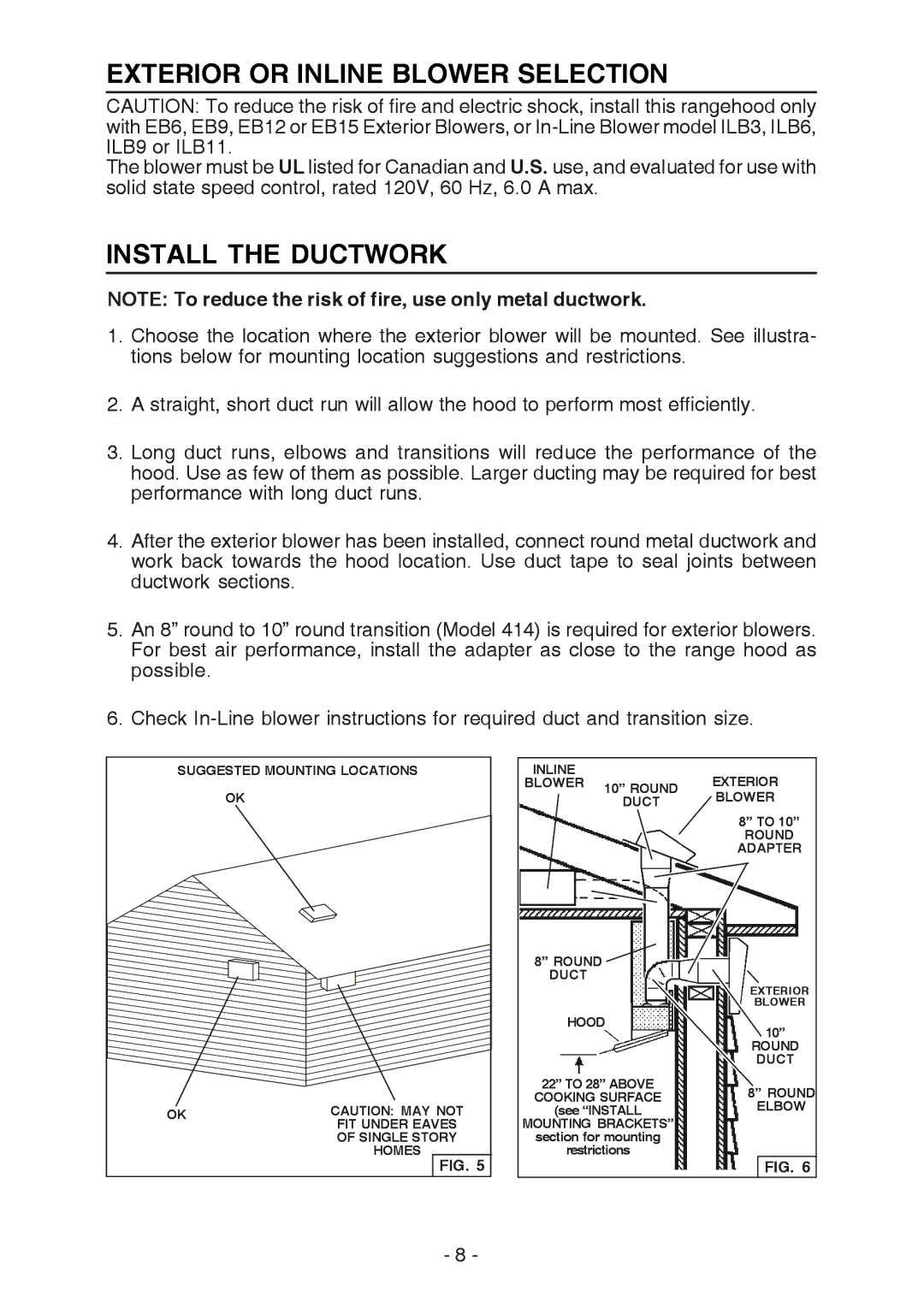
EXTERIOR OR INLINE BLOWER SELECTION
CAUTION: To reduce the risk of fire and electric shock, install this rangehood only with EB6, EB9, EB12 or EB15 Exterior Blowers, or
The blower must be UL listed for Canadian and U.S. use, and evaluated for use with solid state speed control, rated 120V, 60 Hz, 6.0 A max.
INSTALL THE DUCTWORK
NOTE: To reduce the risk of fire, use only metal ductwork.
1.Choose the location where the exterior blower will be mounted. See illustra- tions below for mounting location suggestions and restrictions.
2.A straight, short duct run will allow the hood to perform most efficiently.
3.Long duct runs, elbows and transitions will reduce the performance of the hood. Use as few of them as possible. Larger ducting may be required for best performance with long duct runs.
4.After the exterior blower has been installed, connect round metal ductwork and work back towards the hood location. Use duct tape to seal joints between ductwork sections.
5.An 8” round to 10” round transition (Model 414) is required for exterior blowers. For best air performance, install the adapter as close to the range hood as possible.
6.Check
SUGGESTED MOUNTING LOCATIONS | ||
| OK | |
OK | CAUTION: MAY NOT | |
FIT UNDER EAVES | ||
| ||
| OF SINGLE STORY | |
| HOMES | |
| FIG. 5 | |
| - 8 - | |
INLINE |
| EXTERIOR | |
BLOWER | 10” ROUND | ||
| BLOWER | ||
| DUCT | ||
|
| ||
|
| 8” TO 10” | |
|
| ROUND | |
|
| ADAPTER | |
8” ROUND |
|
| |
DUCT |
|
| |
|
| EXTERIOR | |
|
| BLOWER | |
HOOD | 10” | ||
|
| ||
|
| ROUND | |
|
| DUCT | |
22” TO 28” ABOVE | 8” ROUND | ||
COOKING SURFACE | |||
ELBOW | |||
(see “INSTALL | |||
MOUNTING BRACKETS” |
| ||
section for mounting |
| ||
restrictions |
| ||
|
| FIG. 6 | |
